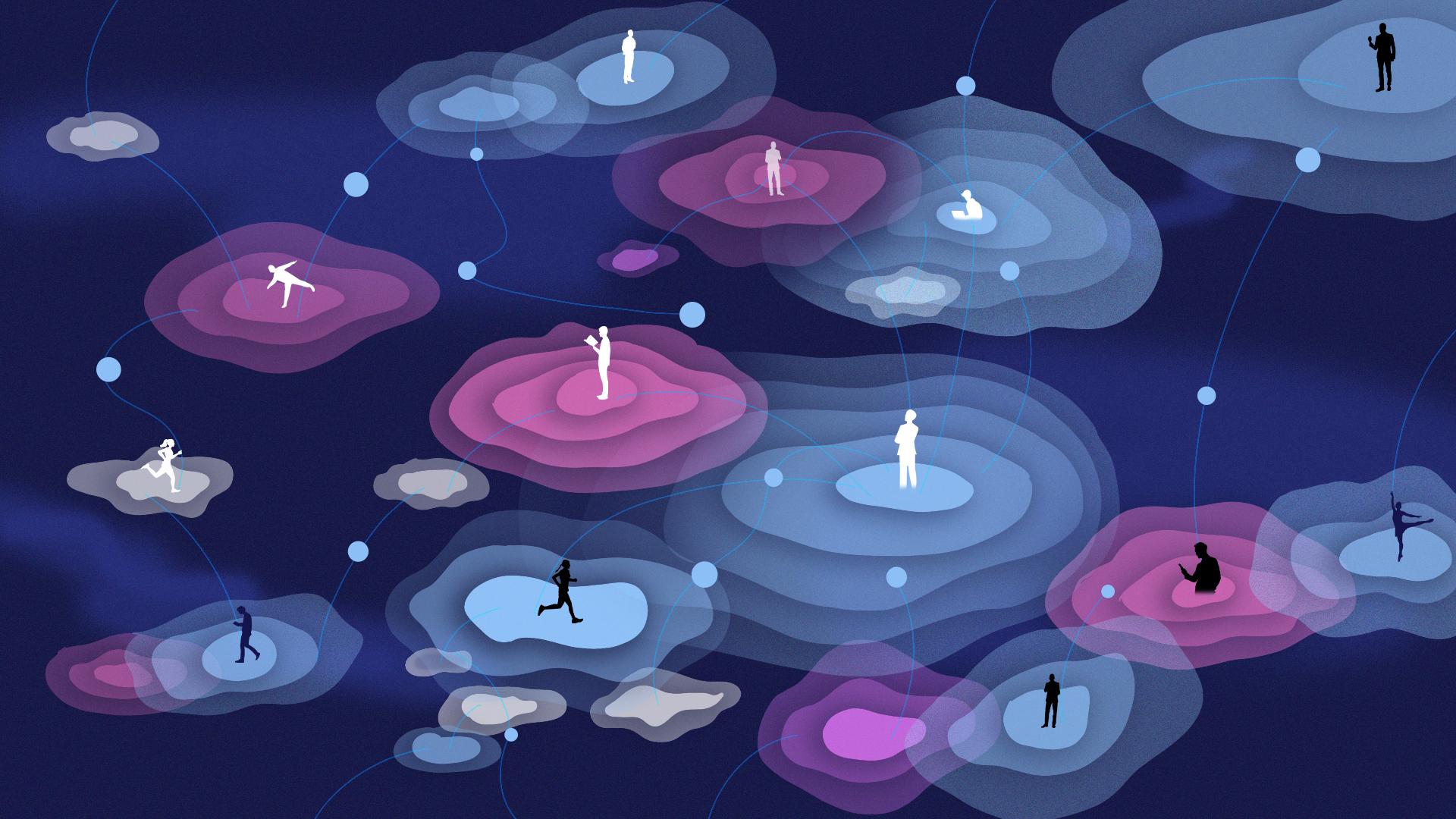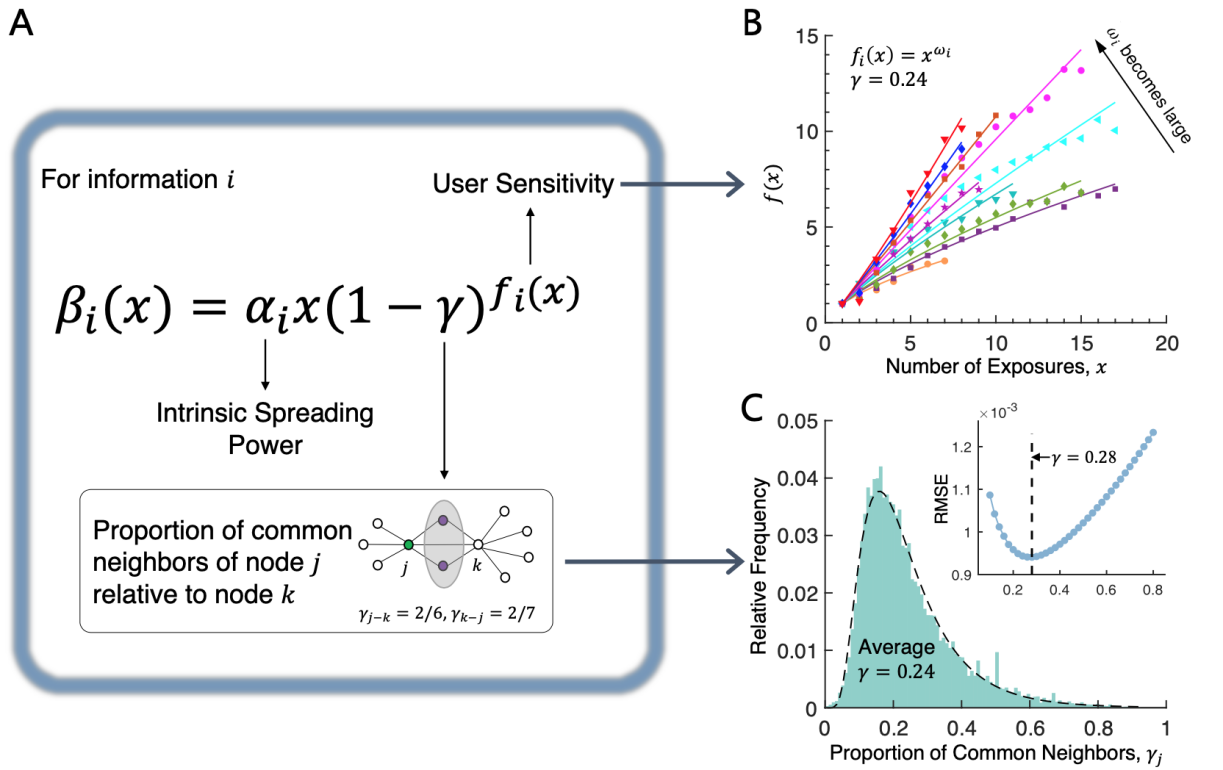Researchers resolve long-standing controversies in social media information dissemination
2025-02-17
Since the dawn of human language, information spreading has been a ubiquitous part of human social activities. Virtually all collective human behaviors are closely tied to information dissemination. Understanding the fundamental laws of how humans spread information is crucial for comprehending both individual nature and the emergence of collective social behaviors. However, data related to information spreading behaviors are often difficult to obtain, leaving the basic principles of information dissemination unclear. In many studies, researchers have had to assume multiple spreading models.
Nowadays, social media, with its advantages of openness, convenience, and real-time communication, has given rise to new social communities involving billions of people. The super-strong dissemination power of social media is influencing every aspect of human society. Therefore, understanding how local individual behaviors trigger global collective spreading on social networks is one of the most critical issues facing humanity today.

Associate Professor Yanqing Hu’s research team from the Department of Statistics and Data Science at the Southern University of Science and Technology (SUSTech) has published a significant study on the dynamics of information spreading in social networks in the Proceedings of the National Academy of Sciences (PNAS) under the title of “Spreading dynamics of information on online social networks”. Based on data from major domestic and international social media platforms, encompassing 7.5 billion users’ spreading behaviors, the team proposed a concise physical equation that accurately describes the mechanisms of information dissemination, resolving long-standing controversies in the field.
Since the reinforcement effect in information spreading on social networks was reported in Science over a decade ago, it has dominated the theory of information dissemination. However, this theory is based on human-designed experiments and has long been subject to numerous controversies. Our empirical observations of naturally generated data from the real world (rather than data from human-designed experiments) show that the dynamics of spreading go far beyond the simple scenario of the social reinforcement effect.
Moreover, there is a clear paradox in the social reinforcement effect—the discrepancy between the lack of conclusive evidence and the high likelihood of super-large-scale information outbreaks, akin to the “Fermi Paradox”. On one hand, due to the positive feedback between the number of exposures and the probability of forwarding, the reinforcement theory inevitably triggers spreading across nearly the entire network. This implies that super-large-scale information outbreaks should be common. On the other hand, in our empirical observations, such outbreaks are rare, with the scale of outbreaks being minuscule compared to the entire network size (at most 0.04%). How to resolve this paradox remains unclear.
The research team analyzed data from billions of users’ spreading behaviors. The study found that the social reinforcement effect and the social weakening effect universally coexist in information spreading. They proposed a concise mathematical model (Figure 1) that accurately describes all complex empirical large-scale spreading trajectories and resolves many long-standing controversies in the field. Additionally, the model revealed that the high clustering nature of social networks (where friends of friends are often friends) leads to rapid, high-frequency, and small-scale outbreaks of information. This gives social media high throughput and diversity in information dissemination, which is highly beneficial for its platform ecosystem.

Figure 1. The universal equation for social media information dissemination
This study is the first quantitative research on the laws of information spreading in social networks based on complete, fine-grained, large-scale, and naturally generated empirical data on human behavior. Given the high generality, universality, and simplicity of the proposed spreading equation, it is believed that this equation will become a classic in the field, not only rewriting many previous studies but also inspiring a new wave of theoretical and applied research.
Drs. Fanhui Meng and Jiachen Sun from Sun Yat-sen University and Associate Professor Jiarong Xie from Beijing Normal University are the co-first authors of the paper. Professor Yanqing Hu, a dual-appointed associate professor in the Department of Statistics and Data Science and the Center for Complex Flows and Soft Matter Research at SUSTech, is the corresponding author, with SUSTech serving as the sole corresponding institution. Other contributors include Lecturer Cong Xu, Ph.D. student Yutian Zeng from SUSTech, Assistant Professor Xiangrong Wang from Shenzhen University, Ph.D. student Shuhong Huang from the Technical University of Munich, Professor Tao Jia from Chongqing Normal University, and Professor Youjin Deng from the University of Science and Technology of China.
Paper link: https://www.pnas.org/doi/10.1073/pnas.2410227122




